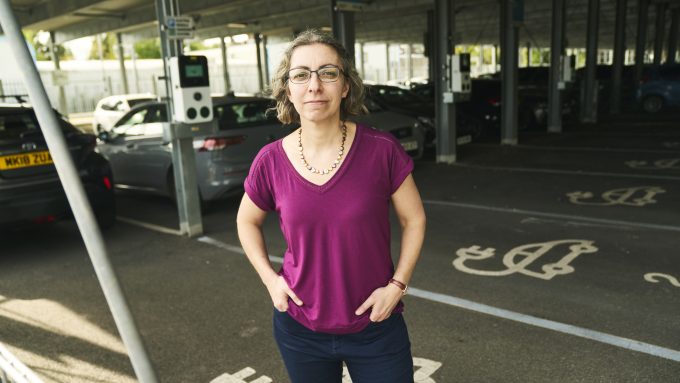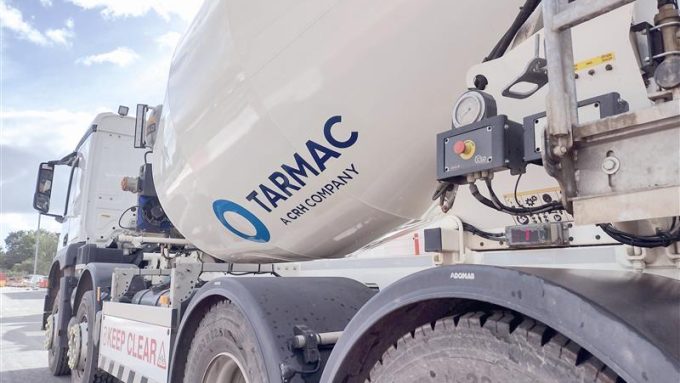
Thousands of miles saved with King’s Lynn hospital staff carpooling

Car sharing with a difference is being explored at the Queen Elizabeth Hospital in King’s Lynn, thanks to a Connected Places Catapult project, funded by the Department for Transport.
Staff are using a new feature of the Mobilityways smartphone app called CommuteJournal, to prove if they are walking, cycling, taking the bus, or car sharing to get to work. Those who don’t drive alone can access incentives, and sharers can park in reserved parking spaces and benefit from reduced parking charges.
The trial at the hospital is called IVORA (Increasing Vehicle Occupancy in Rural Areas) and is being taken forward by Mobilityways, an SME participating in the Rural Transport Accelerator from the Department for Transport, and delivered by Connected Places Catapult.
The programme awarded up to £150,000 each to eight companies, including Mobilityways, last year to explore innovative solutions tackling rural transportation challenges.
“We want to make better use of the millions of empty seats on the roads every day, starting with helping employers help their staff to share cars on the way to work. This can also help companies with climate targets get on track to net zero.”Mobilityways chairman Ali Clabburn
“Support from the Catapult has been great and has provided a useful challenge to us every month on what we are doing,” he adds. “Having both the time and focus to work on the project through the funding received has opened up a whole new market for us.”
Application at the hospital
Reserved Liftshare spaces in the car park at the Queen Elizabeth Hospital are being monitored by the trial of new OccCam cameras that use AI to count people in moving cars. Specially adapted LiDAR technology is also used to count passengers getting out of parked cars. Staff were asked for their consent before their data was shared and GDPR-compliant processes were put in place.
A detailed travel survey was carried out at the start of the project to see how, when and why staff commuted. Mobilityways’ CommuteIQ tool then analysed the travel options available for each individual member of staff that consented to take part (around a fifth opted out).
A CommuteIQ report identified which staff could share journeys with colleagues, which staff lived close enough to walk or cycle, which staff had a bus service and routes where new bus services might be viable. Anonymous data from CommuteIQ is also being shared with local bus companies to help them to identify routes where new services may be popular.

Cars playing their part
Ali is keen to stress that private cars can play a part in efforts to reduce traffic congestion and pollution, especially in rural areas.
“For many people, cars are the most affordable and accessible form of transport. It is not the cars themselves that are the congestion problem, it's how we use them.”
He explains that it is more important to be able to track the number of people arriving every hour at the hospital car park – rather than the number of vehicles – to identify opportunities for car sharing along certain corridors.
“At the moment the only other way to measure occupancy is through manual counts. If we can count people in vehicles and get a sense of car occupancy, we can start to set targets for a highway or a business to increase occupancy,” he adds. “Empty seats represent the largest latent potential there is for cutting emissions and congestion.”
Data from the trial at the hospital will help build a picture of the highway routes used and times of travel, plus the carbon emissions those journeys have likely generated. Off the back of data and discussions, Mobilityways is working with two bus operators who may introduce new services at times that better suit hospital staff.
“We can see if there are several people who live along a corridor where there is currently no bus, and who are prepared to catch a bus,” Ali adds. “Bus services aren't typically led by demand, but we think all services should be, and this sort of data can help us get there.”
A trial of the IVORA car sharing initiative between September last year and January 2025 saved 1,200 journeys, 15,390 car miles and 3.39 tonnes of carbon dioxide on commutes to the Queen Elizabeth Hospital.
Encouraging staff to get on board
Mobilityways contacted 5000 staff at the hospital prior to the trial to get an idea of the level of demand for combing commutes. It found that only 4% of staff currently share cars with colleagues, but that 54% are interested in the concept. In addition, nine in 10 private vehicles arriving at the hospital could realistically pick up another passenger.

One further need to combine journeys is that the hospital is about the begin building works to extend the site, that will take over part of the staff car park.
Twenty-three spaces have now been reserved for staff who share their cars, which could increase to 100 within the next year. Mobilityways aims to have 200 fewer cars arrive at the hospital site: with an even split between increasing the number of staff who share a journey by car, and those who are encouraged to switch to sustainable travel.
Staff who car share to the hospital benefit from a half price fee to park. They also help to populate the Commute IQ dashboard to provide the employer with maps showing detailed analysis on commuting routes and options for each employee. This is combined with travel survey data of staff to show who would be willing to change their commuting habits, such as taking a bus if better services were available.
“Some of the feedback has been lovely,” says Ali. “We had people in a trial group who now share a car and live in the same village who had not met before, and others who started using the app saying they have started walking rather than driving.”
Following the lead of France
Aside from the hospital trial, Ali would like to see the UK follow the lead of France and explore the concept of carpooling more widely, where in some areas it is recognised by local authorities as a viable alternative to scheduled public transport.
“We think that drivers should be rewarded for taking a lift,” he adds. “It would be great to see every highway authority starting to measure vehicle occupancy and setting targets to reduce it.”
Ali would also like the Department for Transport to commit to a 1% increase in occupancy levels of private vehicles each year, and for employers to be asked to measure and report on their staff’s commuting emissions.
“We found that when people try lift sharing, most are still doing it in a year's time,” he adds. “They realise it is better, cheaper, more sociable and more rewarding than travelling on your own.
“Commuting with others provides social, environmental and financial gain. Even the drivers who say 'I would never share a car' do with someone at some point.”
Read more about the Rural Transport Accelerator.
Find out more about Mobilityways.





